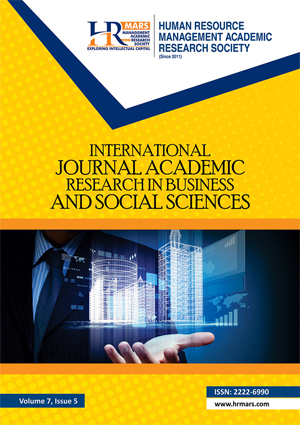Damari, B., Abdollahi, Z., Hajifaraji, M. & Rezazadeh, A. (2018) Nutrition and food security policy in the Islamic Republic of Iran: situation analysis and roadmap towards 2021, EMHJ – Vol. 24 No. 2 – 2018.
Bronfenbrenner, U. (1985). Freedom and discipline across the decades. In G. Becker, H. Becker, &L. Huber (Eds.), Ordnung und unordnung (pp. 326–339). Weinheim, Germany: Beltz.
Carroll, L. N., Soden, L. M., & Eickman, L. A. (2016). A systematic review of the effectiveness of teacher training programs for school-based nutrition education/professional development. Journal of Nutrition Education and Behavior, 48(9), 631-646.
Chen, C. M., He, W., Wang Y. Y., Deng, L. N., & Jia, F. M. (2011) Nutritional Status of Children during and Post Global Economic Crisis in China. Biomed. Environ. Sci. 2011, 24, 321–328.
Chen, L., Wang, J., & Hu, X. (2019). Regional disparities in the implementation of nutrition education programs in primary schools in China: A nationwide cross-sectional study. BMC Public Health, 19(1), 1-9.
Chua, Y. P. (2006). Kaedah dan statistik penyelidikan. McGraw-Hill Education.
Cresswell, J. W., & Clark, P. V. L. (2011) Designing and Conducting Mixed Methods Research. 2nd Edition, Sage Publications, Los Angeles.
Dudley, D. A., Cotton, W. G., & Peralta, L. R. (2015) Teaching approaches and strategies that promote healthy eating in primary school children: a systematic review and meta-analysis.
Dearing, J. W., Sallis, J. F., Kerr, J., & Durant, N. (2009). Adaptive group-based family physical activity promotion for low-income ethnic minority women with young children. Translational Behavioral Medicine, 1(2), 234-243.
Dollahite, J. S., Pijai, E. I., Scott-Pierce, M., Parker, C., & Trochim, W. (2014). A randomized controlled trial of a community-based nutrition education program for low-income parents. Journal of Nutrition Education and Behavior, 46(2), 102–109.
Duan, C. R., Lv, L. D., Guo, J., & Wang, Z. P. (2013) Survival and Development of Left-behind Children in Rural China:Based on the Analysis of Sixth Census Data. Popul. Res. 2013, 35, 39–49.
Fernández-Alvira, J., Mouratidou, T., Bammann, K., Hebestreit, A., Barba, G., Sieri, S., & Moreno, A. (2013). Parental education and frequency of food consumption in European children.
Hamulka, J., Wadolowska, L., Hoffmann, M., Kowalkowska, J., & Gutkowska, K. (2018) Effect of an Education Program on Nutrition Knowledge, Attitudes toward Nutrition, Diet Quality, Lifestyle, and Body Composition in Polish Teenagers. The ABC of Healthy Eating Project: Design, Protocol, and Methodology.
Jamil, A. (2002). Pemupukan budaya penyelidikan di kalangan guru di sekolah: satu penilaian. Tesis Ijazah Kedoktoran, Fakulti Pendidikan, Universiti Kebangsaan Malaysia.
Ji, M., Zhang,Y., Zou, J., Yuan, T., Tang, A., Deng, Jie. & Yang, L. (2017) Study on the Status of Health Service Utilization among Caregivers ofLeft-Behind Children in Poor Rural Areas of Hunan Province: A Baseline Survey. Int. J. Environ. Res.Public Health 2017, 14, 910.
Zhan, J., Yang, H., Jiang, X., Lu, H., Guo, X., & Hong, Y. (2019). Analysis of Students’ Nutritional Status of in the “Nutrition Improvement Program for Rural Compulsory Education Students” Area. Advances in Social Science, Education and Humanities Research, volume 371.
Johnson, J. G., Harris, C. M., & Hannon, L. (2018). State policies and the nutritional quality of school meals. Journal of Public Health Policy, 39(3), 317-332.
Johnson, S. L., Pas, E. T., & Bradshaw, C. P. (2018). Understanding the role of teacher–student relationships in fostering resilience within urban middle schools. Journal of School Psychology, 68, 112-129.
Jones, A., & Brown, B. (2019). Exploring social support within school-based health promotion programs. Health Education Research, 34(2), 189-201.
Cullen, K. W., Watson, K., & Zakeri, I. (2008) Improvements in Middle School Student Dietary Intake After Implementation of the Texas Public School Nutrition Policy.
Mwiria, K. (2005) Crucial Role of Nutrition in Education: The Kenya Experience.
Li, H. (2017) "An Empirical Exploration of Virtual Community Participation: The Interpersonal Relationship Perspective,"in: School of Business Administration. Hong Kong: The Chinese University of Hong Kong, p. 204, 2017.
Huang, L., Wang, Z., Wang, H., & Zhao, L. (2021) Nutrition transition And Related Health Challenges Over Decades in China.
Luo, J., & Jamieson, D. (2018). Examining the Educational Benefits of Interacting with International Students. Journal of International Students 3(2):85-101.
Magbuhat, Rizza-Marie, T., Borazon, Elaine, Q., & Villarino, J (2011) Food Preferences and Dietary Intakes of Filipino Adolescents in Metro Manila, The Philippines.
Smith, C., Wilson, A., & Thompson, A. (2017). The role of school environment in shaping health promotion programs: Insights from a systematic review. Journal of School Health, 45(3), 321-335.
Smith, K. J., Deschaine, M. E., & Sequeira, J. M. (2017). Contextualizing health and wellness: The role of school environments in the implementation of health initiatives. Journal of School Health, 87(8), 590-598.
Vaterlaus, J. M., Patten, E. V., Roche, C., & Young, J. A. (2015). #Gettinghealthy: The perceived influence of social media on young adult health behaviors. Computers in Human Behavior, 45, 151-157.
Yefu, Z., Meimei, J., Jiaojiao, Z., Tong, Y., Jing, D., Lina, Y., Mingzhi, L., Hong, Q., Jihua, C., Qian, L. (2018). Effect of a Conditional Cash Transfer Program on Nutritional Knowledge and Food Practices among Caregivers of 3–5-Year-Old Left-Behind Children in the Rural Hunan Province. International Journal of Environmental Research and Public Health (IJERPH) 15(3):525.
Xu, Y., Bi, X., Gao, T., Yang, T., & Xu, P. (2022) Effect of School-Based Nutrition and Health Education for Rural Chinese Children.
Cao, W., Ziwei, F., Hou, G., Mei, H., Xinrong, X., Jiaxin, D., Jianzhong, Z. (2020). The psychological impact of the COVID-19 epidemic on college students in China. Psychiatry Research 287:112934.
Zenebe, M., Gebremedhin S., Henry C. J., Regassa, N. (2018) School feeding program has resulted in improved dietary diversity, nutritional status and class attendance of school children.
